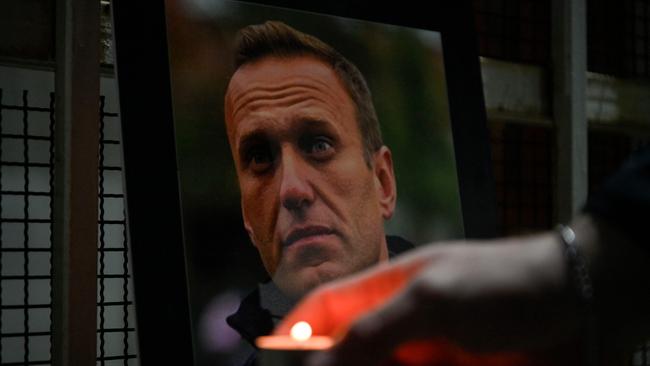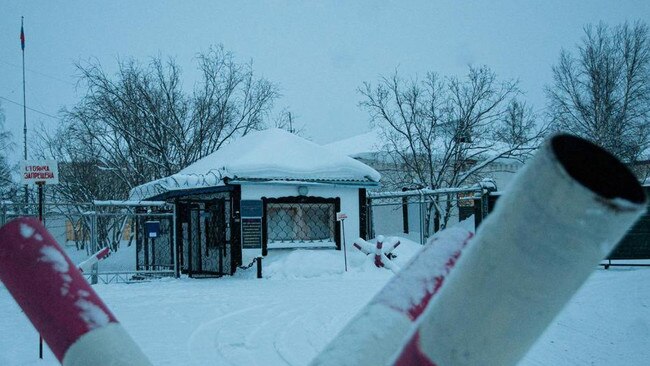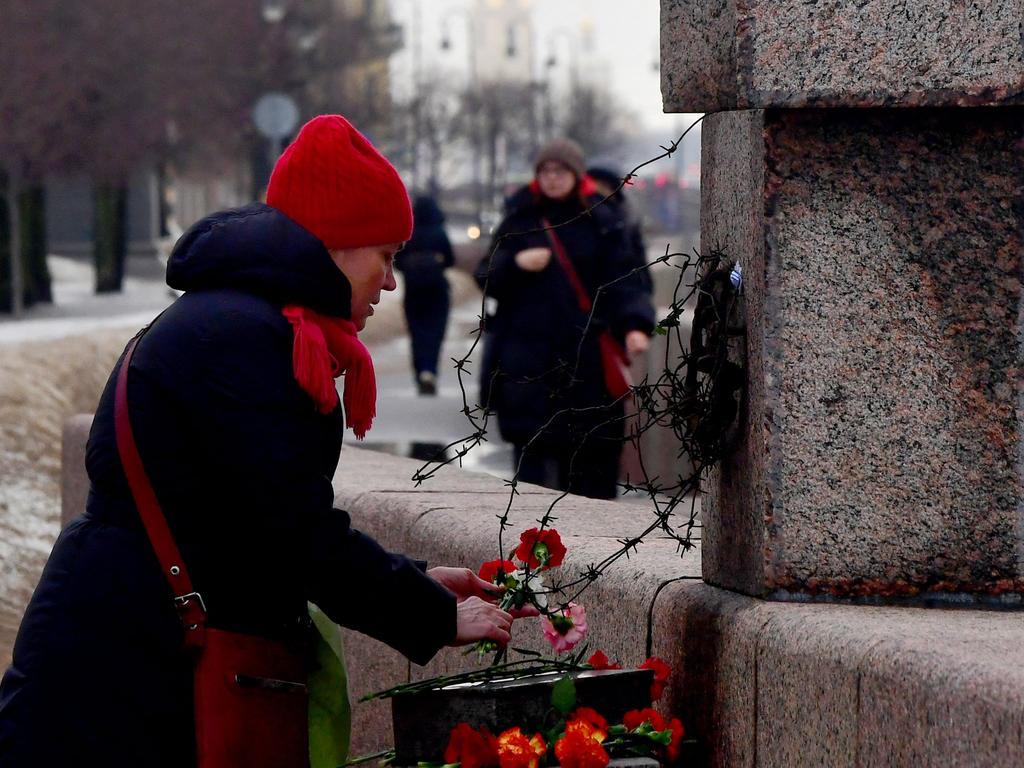In death, Navalny proving more dangerous to Putin than he was when alive
Securing Alexei Navalny’s body appears to be a significant victory for his supporters. The question now is when and where he will be buried – and how the Russian authorities will prevent the ceremony turning into a massive opposition protest.

In death, Alexei Navalny is arguably proving more dangerous to Vladimir Putin than he was when alive.
The opposition leader’s widow on Saturday accused the Russian president of “satanism” and blamed him directly for the “murder” of her husband. In a video released on social media, Yulia Navalnaya, 47, said that Putin was holding the body “hostage” more than a week after his death in suspicious circumstances in the Polar Wolf prison colony inside the Arctic Circle.
Hours later the corpse was returned to Navalny’s mother. Lyudmila, 69, had been told on Friday by officials in the nearby city of Salekhard that they would relent only if she agreed to a private burial.
In a post on Twitter/X, Navalny’s spokeswoman, Kira Yarmysh, said: “The funeral is yet to take place. We don’t know whether the authorities will interfere with it being carried out in the way the family wants and as Alexei deserves.”
Securing the body’s release appeared to be a significant victory for Navalny’s supporters. The question now is when and where he will be buried - and how the Russian authorities will prevent the ceremony turning into a massive opposition protest.
In her video released earlier, Yulia said she was in no doubt that local officials were acting on orders from the Russian leader.
“Murder was not enough for Putin. Now he holds his body hostage, mocks his mother, forces her to agree to a secret funeral,” she said. “I understand perfectly well that all this was not invented by some investigator from Salekhard - Putin is in charge of everything.”
She added: “What Putin is doing now is hate. No, it’s not even hatred – it’s satanism, paganism. What will you do with his corpse? How low will you sink to mock the man you murdered?”

Navalnaya also contrasted Putin’s claims to be a Christian with her late husband’s faith, which she said had sustained him during more than three years of incarceration before his death aged 47 – more than 300 days of which he spent in solitary confinement. Putin has made Russian Orthodoxy a pillar of his regime.
“We knew before that Putin’s faith was fake, but now we see it more clearly than ever,” she said. “Faith is not about kissing an icon. Faith is about goodness, about mercy, about salvation.”
Navalny’s death, and the tug of war over his remains, have kindled signs of protest against the Kremlin, drawing in members of the Russian Orthodox Church and believers shocked at the authorities’ refusal to let a grieving mother bury her son, as well as longstanding opponents of Putin’s rule.
People in Moscow and other Russian cities began laying flowers in honour of Navalny at monuments to victims of Soviet-era repression and other sites. Police initially allowed them to do so, but then began to make arrests.

An open letter signed by 800 priests and members of the church described Navalny as “a man of faith” and called the refusal to hand over his body an “act of ruthlessness and inhumanity”.
At least 32 people were reportedly on Saturday at demonstrations in Moscow and eight other cities, OVD-Info, a human rights advocacy group, said.
The authorities are thought to fear that a public burial for Navalny could galvanise resistance to Putin before presidential elections on March 15-17.
Independent examination of his body could also shed light on the cause of death. The authorities cited natural causes; his supporters insist he was murdered.
Yulia Navalnaya has claimed he was poisoned with novichok, the nerve agent used against him in 2020, obliging him to seek treatment in Germany.
Vladimir Osechkin, a Russian human rights campaigner, told The Times last week he believed Navalny had been felled with a single powerful punch to the heart – a technique once taught to Russian special forces - having been weakened by being left outside in sub -20C temperatures for 2 and a half hours.
Even the time of Navalny’s death, officially 2.17pm local time on February 16, is in doubt; it soon emerged that fellow inmates had been told of his demise several hours earlier and had been subjected to special lockdown procedures the evening before.
He was last seen by the outside world on February 15 when he appeared in court by video link from his cell.
Although the opposition leader had long been a thorn in Putin’s side, it seemed a curious moment to order his killing, given the upcoming election. It also seems at odds with apparent attempts by Putin to make contact with US Republicans who want to stop military aid for Ukraine and force Kyiv to the negotiating table - an idea the Russian president floated during a recent TV interview with Tucker Carlson, the right-wing journalist.
Yet, according to Ilya Yashin, another imprisoned Russian opposition leader who knew Navalny for more than a decade, applying such logic to Putin makes no sense.
“In Putin’s understanding, this is how power is asserted: through murder, cruelty, and demonstrative revenge,” he said in a message smuggled out of jail in Smolensk in western Russia.
“This is not the thinking of a statesman. This is the mindset of a gang leader. So let’s honestly admit: Putin is the leader of the mafia structure that has merged with our state. He keeps people in fear, and those who are not afraid, he imprisons and destroys.”
Navalny’s death did not come out of the blue. He was jailed immediately on his return to Russia in January 2021. Few expected him to be released as long as Putin remained in power.
Then, last summer, Russian authorities began what, in retrospect, appears to have been a systematic campaign to crank up the physical and psychological pressure on Navalny. The first stage came on August 4 when, already incarcerated in IK-6, a strict jail 150 miles east of Moscow, he was given a further 19-year sentence.
He disappeared from view until, on Christmas Day, Navalny’s spokeswoman announced he had been “found” at Polar Wolf.
Fears have grown for other opposition figures held in jail - estimated at 679 by Memorial, a banned human rights group - including Vladimir Kara-Murza, a former academic who was sentenced last April to 25 years in jail for criticising Russia’s war against Ukraine - the longest known sentence of any of Putin’s critics.
Kara-Murza, 42, who has British as well as Russian citizenship, has survived two poisoning attempts – in 2015 and 2017 – and his health is thought to be poor. On Friday Yashin said the threat to his life was not just a “real one - it’s off the charts”.
Last week Kara-Murza used a court appearance by video link to voice his defiance. “We cannot afford any despair, no despondency,” he declared in a statement spread on social media."I’ve been in a fog myself all this week ... I still have neither my mind nor my emotions to process what happened. But if we give in to despondency and despair, this is exactly what they need.”
The Sunday Times







To join the conversation, please log in. Don't have an account? Register
Join the conversation, you are commenting as Logout